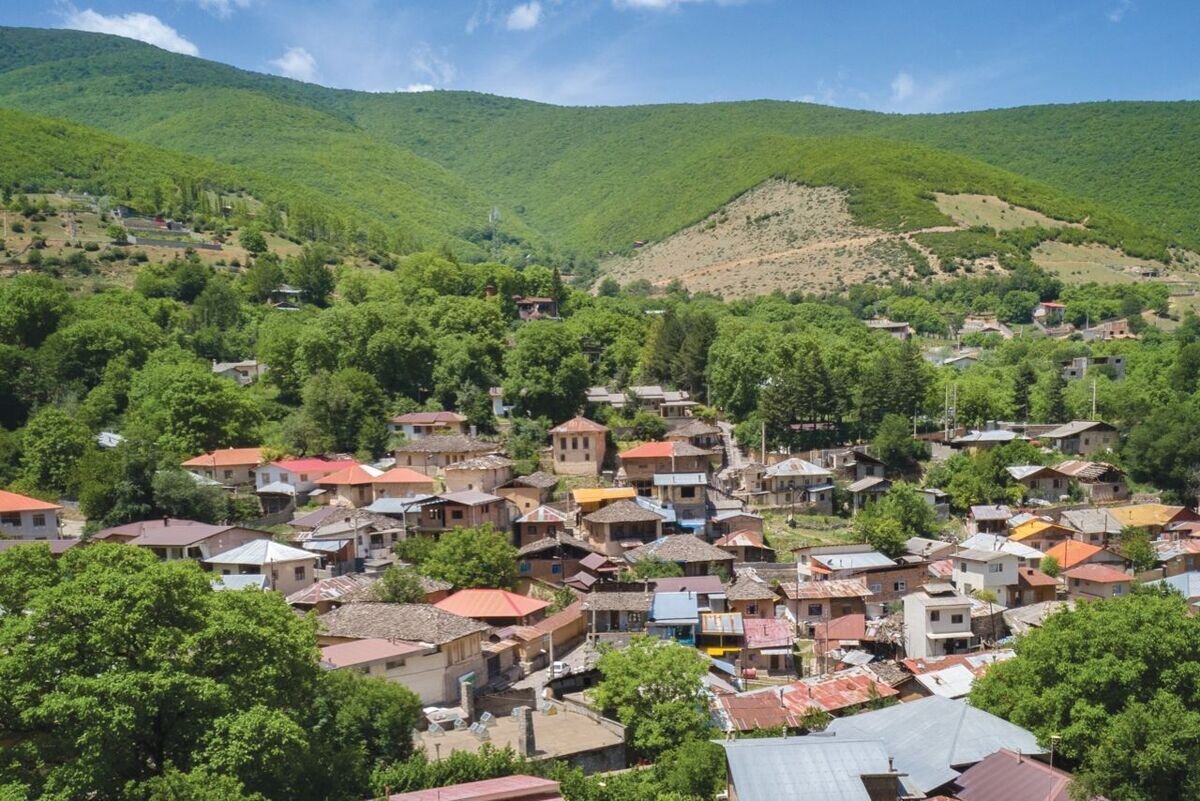Legend of ‘Mina and Panther’ chosen as global brand for Kandelous village

TEHRAN – The local legend of “Mina and the Panther” has been selected as a symbolic brand for Kandelous, a scenic village nestled at the foot of the Alborz Mountains of northern Iran.
The captivating folklore has been adopted with an environmental focus to represent Kandelous on a global scale, according to Hossein Izadi, the provincial tourism chief.
Speaking during a recent visit to the village on Monday, Izadi also announced the formation of a dedicated working group to pursue Kandelous’ nomination for the UNESCO World Heritage list.
“The tale of Mina and the Panther not only reflects our cultural depth but also conveys powerful environmental themes, making it an ideal narrative to brand this village internationally,” Izadi said.
He also noted that wooden signage based on local dialects has been installed throughout the village and that mud plastering is being applied to create a unified visual harmony across Kandelous.
Artworks and mural paintings inspired by the legend have also been developed as part of this branding initiative. A file compiling several such legends and heritage elements – created with input from the local community – has already been submitted to the Ministry of Cultural Heritage for official recognition.
The story of Mina and the Panther is a haunting love legend that has been passed down for over a century among the elderly of Kandelous. According to local lore, Mina was an orphaned girl with ruby-red eyes who lived alone in a modest home, which still stands today as a popular tourist site in the village. Due to her unique eyes, she was often shunned by other children, which deepened her sense of isolation.
The legend says that Mina would often venture into the forest to collect firewood, singing loudly to overcome her fear and loneliness. One day, a wild panther, captivated by her voice, began to follow her and eventually traced her path back to her home. Their unlikely encounters blossomed into a surreal friendship, united by shared solitude and an emotional bond. Over time, the panther would help Mina carry firewood during the day and visit her quietly at night, peeking through her window just to listen to her sing.
Eventually, the village began to whisper about the mysterious visits of the panther. The ladder Mina used the night she first encountered the panther is now preserved in the Kandelous Museum, a symbolic artifact commemorating the legend.

Kandelous – often referred to as a “Lost Paradise” – offers a blend of natural splendor and cultural mystique. With initiatives like the newly established Environmental House and storytelling-based tourism, officials aim to draw eco-conscious travelers and culture seekers alike.
“We are also working to resolve infrastructure challenges in the region and are introducing the village on international platforms with an educational focus,” Izadi added.
This branding through folklore, he believes, will not only protect the village’s intangible heritage but also generate sustainable tourism and global recognition.
Kandelous is one of Iran’s oldest settlements, with traces of civilization dating back before the Islamic era. During the Qajar dynasty, the village gained recognition, with Nasser al-Din Shah Qajar reportedly passing through and admiring the craftsmanship of local metalworkers.
The village’s architectural charm—featuring wooden-framed windows, gabled rooftops, and winding stone alleyways—reflects its deep-rooted heritage. Unlike many modernized settlements, Kandelous has preserved its historical texture, allowing visitors to experience Iran’s rural elegance firsthand.
AM
